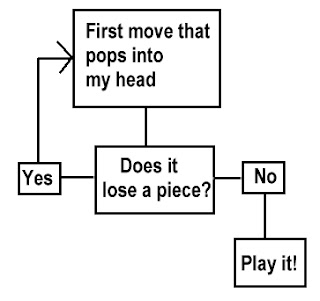From the book’s blurb: A superb guide to the general concepts of chess technique and the methods for using technique to plan ahead. Early initiative and control of the center, translating an advantage into the middle game. 200 examples from actual play.
Abrahams (1907-1980) was a lawyer (barrister) in England and a very strong amateur player who published a number of books on chess. In this books he offers a collection of examples of methods of play he says are designed to help the novice although I think it would be too advanced for a true ‘novice.’ Maybe 1400-1600 would be more accurate.
Abrahams uses a lot of endgames for examples because he believed this is the area where the function of the pieces can be isolated and examined in more detail. However, he also uses a lot middlegame and complete games for examples.
Abrahams likens the discovery of strategy and technique to his discovery of prose. When he discovered prose, he realized he had speaking in prose all his life. Likewise, he believed many chess players already have some basic understanding of strategy, tactics and ideas but have difficulty expressing themselves on the board. I think this is true. While reading De Groot’s Thought and Choice in Chess I noticed that on occasion lower rated players looked at some of the same moves the GMs did, but usually rejected them out of hand. I thought that was odd and after some thought decided to begin limiting my candidate moves to the first 3-4moves that occurred to me. Over the years I gradually refined this technique as depicted in the following chart.
OK, that’s a joke, but I did notice my game improved. Maybe not a lot, but if you’re like me, any improvement, however slight, rates as a success.
Technique in Chess is a fun book to read but like all chess books, it will take some dedication but the reward is that you will get some good, practical advice that is bound to improve your game and prepare you for various situations that will arise during the game.
BTW…if you don’t know descriptive notation I recommend learning it! If you don’t, you are missing out on some great old books. I learned it as a 10-year old, so how hard can it be? If you have to, print out the diagram shown in the Wikipedia article HERE.


No comments:
Post a Comment